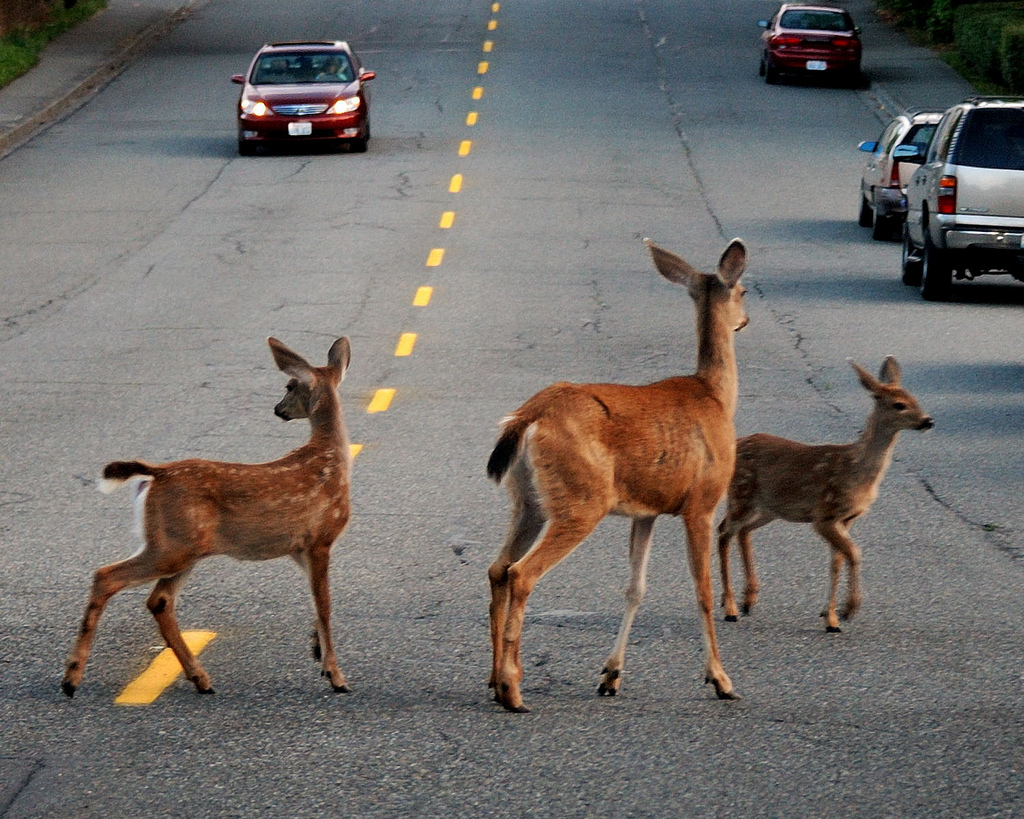Key events
Community members experience an increase in deer-related problems, like plant damage or deer-vehicle collisions. Community leaders become aware of residents’ concerns as a result of receiving more frequent complaints or media coverage of deer-related impacts. Finally, a critical mass of residents calls for action from local officials. In response to residents' concerns, community leaders identify a process to gather information, assess the situation, and define the problem.
Key information needs
At this stage, community leaders characterize the nature and extent of deer-related problems. A good starting place is to answer these broad questions:
 What kinds of deer-related problems are occurring?
What kinds of deer-related problems are occurring?- Where and when are these problems occurring?
- Who is experiencing these problems?
- How severe are the problems?
The level of effort your community will spend defining the problem depends on the resources available and the level of detail and accuracy required to fill information gaps.
In some cases, a quick assessment is all that is needed.
- For instance, the local police department may be able to provide statistics on number of deer-car collisions in the community
Filling other information gaps will require more time and effort for data collection.
- For example, a carefully-designed and administered mail survey may be needed to assess residents’ experiences with deer and attitudes about deer management (see resources section for survey examples)
- Many communities find it helpful to seek help from technical experts (e.g., wildlife professionals, public land managers, social scientists) to help define their local problem
Common challenges
- Lack of agreement on the problem. Chances are slim that all sectors of the community will be in complete agreement about whether deer are really a problem and, if so, how they are impacting quality of life. Agreement about the existence and nature of the deer problem must be sufficient to propel the issue toward resolution. Distrust of community leaders or wildlife professionals may develop quickly if a stakeholder group believes that its concerns are being dismissed or ignored by officials.
- Desire to rush to decisions. It is tempting to jump to a discussion of deer management actions prematurely. When we see a problem, we want to fix it. But without a common understanding of that problem, and a goal statement describing the desired outcomes for your program, evaluating the success of the program in future years will be difficult at best. Consider bringing in a skilled process facilitator to help your community focus on scoping out the problem and defining goals before moving to the decision phase.

